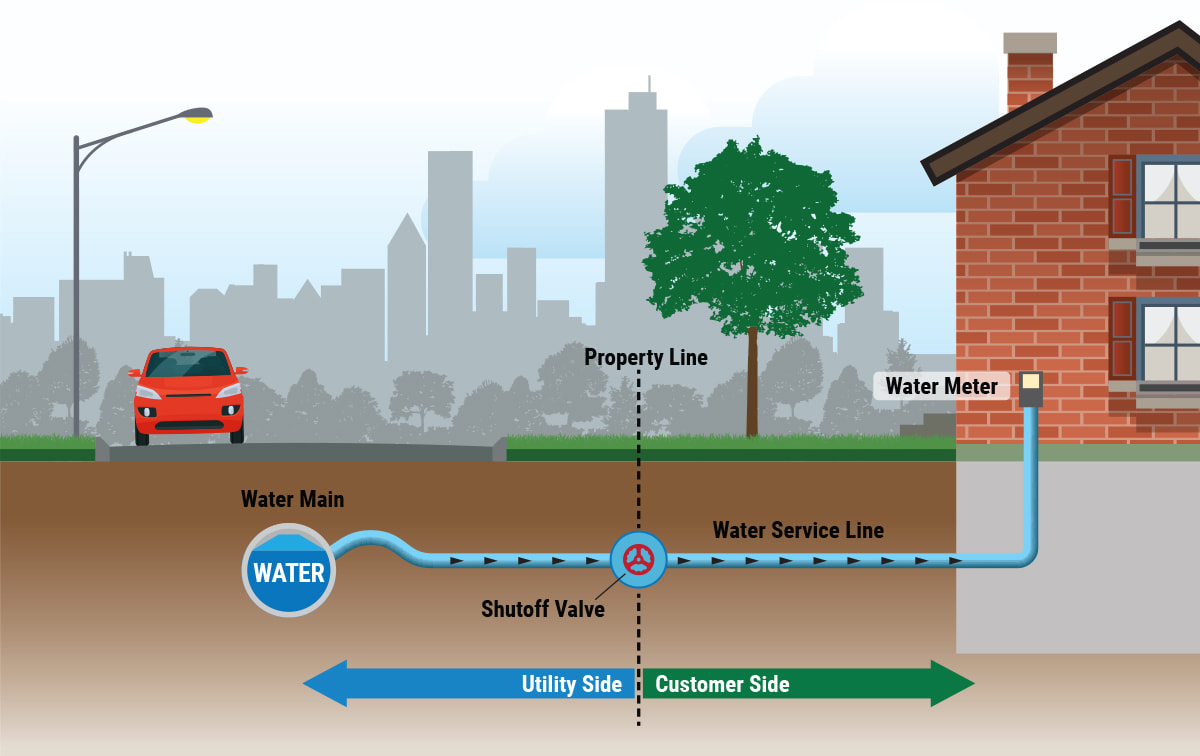Service Line Inventory
What is a service line?
A service line is a section of pipe that connects the city's water main in the street to your property and typically enters through your basement. Service lines typically have split ownership, meaning the water system owns a portion of the service line (from the water main to the shutoff valve), and the property owner owns a portion (from the shutoff valve to their water meter). If the property was built prior to 1986, the service line could be made from a material or have associated components that may have the potential to leach lead into the drinking water.

Service Line Materials
Water service lines can be made of copper, plastic, brass, galvanized iron/steel, or lead. Lead service lines were installed in certain water systems primarily during the late 1800s through the 1940s (EPA, 2022). From the 1950s to 1986, contractors across the country applied 50% lead solder for copper piping installation, and until January 2014, drinking water fixtures in the U.S. contained up to 8% lead alloy. In Portsmouth, water service lines are typically made of copper pipe. The City of Portsmouth Water Division has no records of lead service lines having been installed in its water system. However, it is still possible that lead service lines, or galvanized pipes with lead components, may exist in the Portsmouth Water System. Therefore, we are actively working to determine all the components of these service lines.

Service Line Inventory
New federal requirements have been issued by the Environmental Protection Agency to require all water systems across the United States to create and maintain a public inventory of service line materials by October 16, 2024, in compliance with the revised Lead and Copper Rule. This regulatory update was developed to better protect communities from possible lead exposure in drinking water by providing the public with information on the location and material type of each service line connected to a public water system.
There are approximately 8,400 water services located throughout Portsmouth. Of the 8,400 privately-owned water services in the city, 6,800 have been identified with material types. This leaves approximately 1,600 privately-owned water service lines that have no accurate records.
The City of Portsmouth Water Division staff will be working this year to identify the materials of both the privately-owned and utility-owned portions of these unidentified lines. This will require Public Works’ staff to enter these 1,600 properties to inspect the water service line before the water meter. There will be no cost for this work and will be completed in approximately 10-15 minutes. Once the material is properly identified, Portsmouth Water Division staff will update their inventory records, share the information with the property owner, and provide a recommendation, if appropriate, moving forward. Notification letters will be sent to these targeted properties being served by the Portsmouth and Pease Tradeport Water Systems in the hope of arranging a scheduled visit, solely for the purpose of this service line identification. Properties that fall on the list of "unknown services" will receive a notification letter in the near future to prompt this material identification effort. Utility-owned portions (on opposing side of shutoff valve) will continue to be identified and validated through means of digging.
Not only is it important for public water systems to understand the age and makeup of their distribution networks, but it is equally as important for home and business owners to know their internal plumbing materials that could have a direct impact to their health. This effort will benefit both the water supplier and the consumer as the country aims to remove harmful lead components and galvanized steel from water distribution systems.